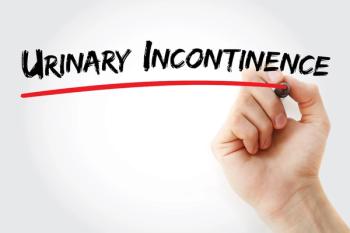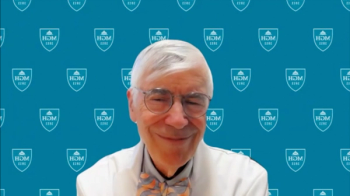
EHRs, COVID-19, and Understaffing: Spotlighting Contributing Factors to Nurse Burnout
To mark International Nurses Day, we look at factors contributing to workload burden and burnout in nurses, which include electronic health record (EHR) management, understaffing amid the COVID-19 pandemic, and a lack of emotional support.
With COVID-19 causing an unprecedented strain on hospitals and health care systems, the risk of
For physicians and nurses, the trauma of
Although nurses have
The issues of work stress and burnout among nurses has been present long before COVID-19. Responsible for the day-to-day care of patients, nurses are at substantial risk of experiencing
In fact, management of telehealth and electronic health records (EHRs), which became key during the pandemic to manage patient health virtually without the threat of infection, may play a major role in contributing to the overwhelming workload and burnout observed in nurses.
EHRs, Telehealth Impact on Nurse Workload
With use of telehealth and EHRs growing within hospitals and health care systems, Chelsea Howland, a registered nurse and PhD candidate at the University of Missouri Sinclair School of Nursing, said in a email exchange with The American Journal of Managed Care® (AJMC®) that steps are warranted to better integrate these services so that health care staff are not tasked with substantial administrative burden.
As an author of a recent
These included reminding participants to self-monitor using the electronic blood pressure monitor and blood glucose meter and fielding participant issues with the data transfer system, noted Howland.
Witnessing firsthand the benefits of telehealth through her father, who has type 2 diabetes and is at
“Rural adults face barriers including health care provider shortages, fewer specialty providers (endocrinologists or certified diabetes educators), longer travel distances, fewer public transport options, and financial constraints, which can make access to health care resources more difficult,” added Howland. “Telehealth can provide access to valuable health resources, allowing patients living with chronic diseases to overcome barriers impeding health resources access.”
However, these systems do not function independently, she added, and instead require nurses to review and interpret information obtained, and work collaboratively, communicating with other members of the health care team to provide optimal patient care.
Nurse Burnout Affects Patient Outcomes
As telehealth and EHRs aim to streamline care management for patients, usability of these services may prove significant in easing the workload for health care workers and ultimately the quality of care provided.
Assessing EHR usability in a
“Studies have shown that working with EHRs that are not 'user friendly' and are not integrated into the pace of clinical workflow increase nurse workload, including greater documentation and cognitive burdens,” Lee said via email.
Notably, findings in her study suggest that working with EHR systems that have not been designed or optimized for the nurse end-user may produce critical lapses in patient surveillance/monitoring, errors or delays in care, or impaired ability to coordinate with other clinicians—all of which could contribute to adverse outcomes, she said.
Among these adverse outcomes, surgical patients treated in hospitals with poorer EHR usability had significantly higher odds of inpatient mortality (odds ratio [OR], 1.21; 95% CI, 1.09-1.35) and 30-day readmission (OR, 1.06; 95% CI, 1.01-1.12) compared with patients in hospitals with better usability.
“It is possible that this increased workload is one of the potential mechanisms underlying the relationship between poor EHR usability and negative patient outcomes; however, more research is needed,” she noted.
Moreover, EHR usability may further exacerbate an issue that has grown significantly amid the pandemic: nursing staff retention and turnover. In the study, nurses who worked in hospitals with poorer EHR usability had significantly higher odds of burnout (OR, 1.41; 95% CI, 1.21-1.64), job dissatisfaction (OR, 1.61; 95% CI, 1.37-1.90), and intention to leave (OR, 1.31; 95% CI, 1.09-1.58) compared with those who worked with EHRs that had better usability.
Solutions, Future Implications
According to a recent
The lack of nursing staff, PPE, and support has affected patient care, some say. One nurse described it to
As a way to boost morale and increase retention of nurses, especially those new in the field, the Yale New Haven Health System (YNHHS) recently created its Clinical Nurse Transition program that pairs newly graduated nurses with personal coaches.
Discussing the program, Jennifer Ghidini, RN, director of Nursing, Medical Critical Care, and Nursing Specialties, YNHHS, told AJMC® that most new nurses experienced an altered senior year clinical rotation due to the pandemic.
As the workload increased for all nursing staff during this time, these coaches were able to assist new nurses on EHR support and navigation, as well as provide emotional support and real-time communication with other new nurses and staff via the
“The complexities of the EHR prove to be a challenge to many, especially new nurses toggling new skills, new environment, and the launch of their new careers,” Ghidini wrote in an email. “An unexpected outcome was the veteran and charge nurses were able to focus on their workloads because the coaches were now supporting and answering questions from the new nurses. This greatly increased job satisfaction for the veteran and charge nurses.”
Ultimately, addressing the root of workload burden is an issue that warrants intervention from either the health care system or federally. Prior authorizations, which were
So, what are some suggestions to improve EHR usability?
Lee said that one solution would be to optimize the integration of the EHR into clinical workflows to ensure that nurses are involved from the vendor stage all the way through customization and optimization at the clinical site.
“Previous studies of ours from the Center for Health Outcomes and Policy Research have shown that nurse engagement in organizational decisions regarding patient care, a core feature of a strong nurse work environment, is associated with better outcomes for nurses and patients,” said Lee.
“Specifically related to EHRs, we found that nurses employed in hospitals with better work environments were more than twice as likely as nurses working in less favorable organizational conditions to report that they were involved in the selection/modification of their EHR system.”
Also speaking on potential solutions, Howland said that organizations will need to develop new policies and procedures around the implementation of telehealth systems, taking a collaborative interdisciplinary approach with nurses and health care provider stakeholders.
“It is integral that nurses receive education and training to make analyzing and interpreting patient information more efficient and consistent,” said Howland. “When telehealth systems are implemented, it is important for organizations to evaluate how workload and workflow are affected, to implement evidence-based practices supportive of nurses and patients.”
Newsletter
Stay ahead of policy, cost, and value—subscribe to AJMC for expert insights at the intersection of clinical care and health economics.





























































